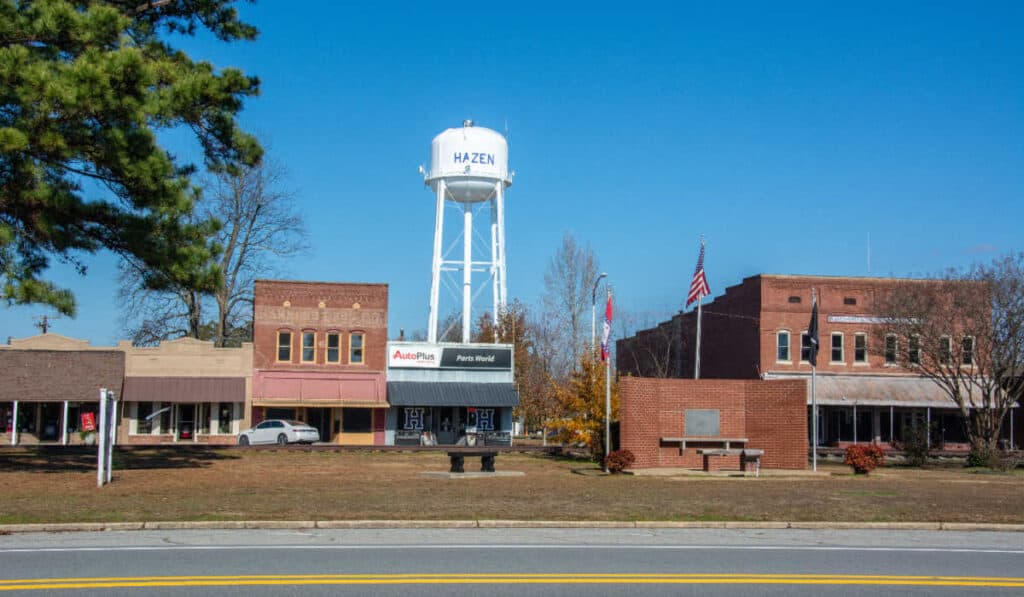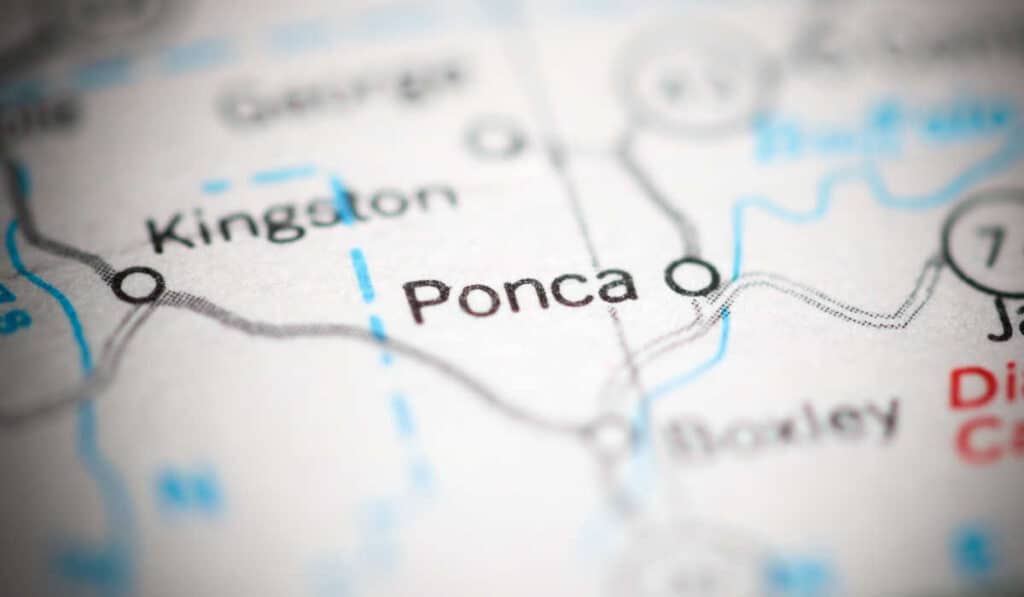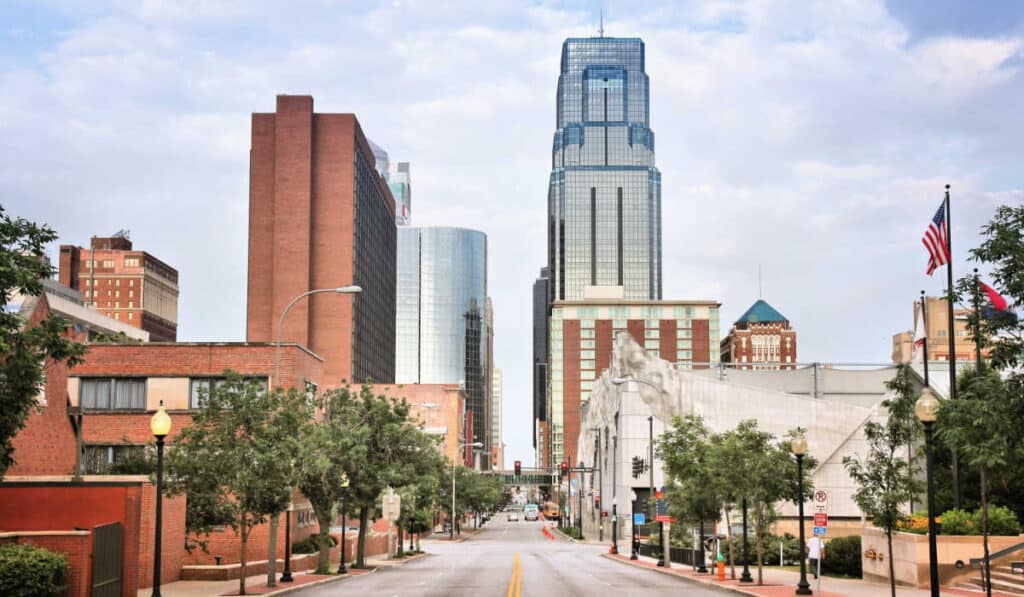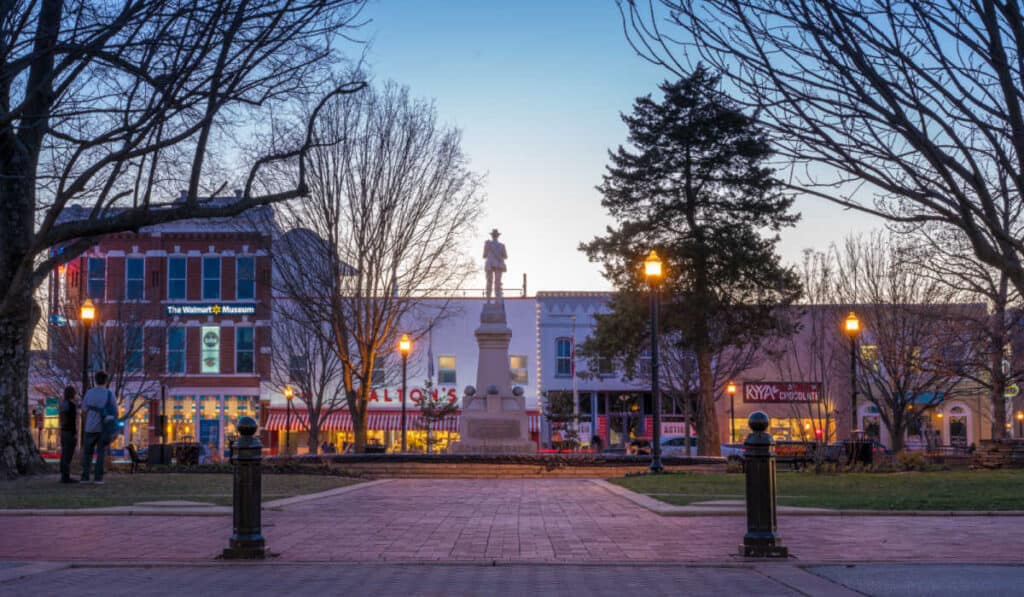St. Louis, Missouri, a vibrant city on the banks of the Mississippi River, boasts a rich history and a unique blend of cultural influences, making it a prime destination for foodies, sports enthusiasts, and history buffs alike. A major attraction for visitors and locals alike is the iconic Gateway Arch, which symbolizes the city’s role as a gateway to the American West. But beyond its unmistakable skyline, St. Louis offers a vast array of experiences and flavors that you won’t find anywhere else.
One thing that sets St. Louis apart is its thriving food scene, with numerous dishes that are quintessential to the city. St. Louis-style pizza with its thin, crispy crust, gooey Provel cheese, and distinctively square-cut slices is a favorite among both locals and tourists. Another famous dish in St. Louis is the toasted ravioli, which is typically deep-fried, breaded, and served with marinara sauce for dipping. Furthermore, Vess Soda, a local favorite, is the city’s longstanding beverage brand that offers a unique variety of flavors.
Apart from its culinary delights, the city is also known for being home to several famous personalities. From sports legends like baseball Hall of Famer Enos Slaughter to world-renowned Grammy Award-winning singer Michael McDonald, St. Louis has a wealth of talent and inspiration. With so much to experience and discover, it’s no wonder that St. Louis continues to capture the imagination of travelers and residents alike.
History
Louisiana Purchase
In 1803, the United States acquired the Louisiana Territory from France, comprising a vast area of land that laid the groundwork for westward expansion. This significant event, known as the Louisiana Purchase, doubled the size of the country and set the stage for St. Louis, Missouri, to become a pivotal city in the development of the American frontier.
Lewis and Clark Expedition
The following year, in 1804, President Thomas Jefferson appointed Meriwether Lewis and William Clark to lead the Louisiana Purchase Expedition in exploring and mapping the newly acquired territory. The expedition commenced from St. Louis, which was already a bustling trading center. The city served as a crucial starting point for their journey, and their successful return in 1806 bolstered St. Louis’ growing reputation as the “Gateway to the West.”
Westward Expansion
As more settlers arrived in St. Louis, the city thrived as a hub for commerce and transport. Its strategic location on the Mississippi River made it an ideal junction for steamboats, fostering trade and migration throughout the 19th century. St. Louis’ prominence as the western-most city in the new territory solidified its role as a key player in the country’s westward expansion.
1904 World’s Fair
In 1904, St. Louis hosted the renowned Louisiana Purchase Exposition, also known as the 1904 World’s Fair. This showcased the city’s growth and progress in innovation, art, and culture during a time when St. Louis was the fourth-largest city in the United States. The fair not only reflected the city’s importance in the nation’s development but also contributed to shaping its ongoing legacy as an influential hub for cross-cultural exchange and modern advancements.
Landmarks
Gateway Arch
The Gateway Arch is the most well-known symbol of the city of St. Louis and the tallest monument in the USA. Standing at 630-feet tall, this man-made steel marvel represents the city’s role as the “Gateway to the West” and commemorates St. Louis’ part in the United States’ westward expansion. Visitors can walk the base of the arch or take a ride up to the top, offering spectacular views of the surrounding cityscape.
Old Courthouse
Another significant landmark in St. Louis is the Old Courthouse, located just a short distance from the Gateway Arch. This historic building played a critical role in the early history of the United States, as it was the site of the Dred Scott trials. Today, the Old Courthouse serves as a museum and ticketing center for the Gateway Arch, providing a glimpse into the era and events that shaped the nation.
Eads Bridge
The Eads Bridge is another important landmark in St. Louis. Completed in 1874, it was the first bridge to be built across the Mississippi River and the longest arched steel bridge at the time. Named after its designer, James B. Eads, the bridge is an impressive piece of architectural and engineering design. It continues to serve both pedestrians and vehicles today, connecting the states of Missouri and Illinois. Located nearby is the Jefferson National Expansion Memorial, an area commemorating St. Louis’ role in westward expansion and hosting both the Gateway Arch and the Old Courthouse.
Culture
Music
St. Louis has a rich musical history, being the birthplace of legendary artists and various genres. The city is most famous for its blues and ragtime music. It has produced iconic musicians such as Chuck Berry, who played a significant role in the development of rock and roll. St. Louis is also home to the esteemed St. Louis Symphony Orchestra, one of the oldest symphony orchestras in the United States.
Art
The artistic scene in St. Louis is diverse and has a strong presence throughout the city. The Saint Louis Art Museum houses an impressive collection of art, showcasing works from various periods and regions. In addition, the city is known for its exceptional mosaics, particularly at the Cathedral Basilica of Saint Louis. Art enthusiasts can also visit the Planetarium at Union Station, which offers unique art exhibitions and experiences.
Festivals and Events
St. Louis hosts numerous festivals and events throughout the year, attracting visitors and locals alike. Some popular events include:
- Taste of St. Louis: A food festival showcasing the city’s vibrant culinary scene.
- St. Louis International Film Festival: An annual event presenting local and international films.
- Great Forest Park Balloon Race: A hot air balloon race held in Forest Park.
Architecture
The architecture in St. Louis is a unique blend of both historical and modern elements. The city’s Union Station is a stunning example of early 20th century architecture, while contemporary designs can be found in the metropolitan area. The most iconic structure, however, is the famous Gateway Arch, symbolizing St. Louis as the gateway to the west.
Sports
Baseball
St. Louis, Missouri is known for its strong presence in the world of sports, particularly baseball. The St. Louis Cardinals are a Major League Baseball (MLB) team that has been representing the city since 1882. They have been a part of the National League since 1892 and are considered one of the most successful MLB franchises in history. With 11 World Series titles, 19 National League pennants, and 14 division titles, the Cardinals have secured their place as a significant player in the baseball landscape.
The Cardinals play their home games at Busch Stadium, which opened in 2006. The stadium is located in downtown St. Louis, and during its first season, the Cardinals won the World Series, making them the first team in almost 100 years to win a championship in the inaugural season of a new ballpark.
St. Louis also has a history with the St. Louis Browns, who played in the city from 1902 to 1953. The Browns won one American League pennant during their time in St. Louis. However, they were unable to secure any World Series Championships.
Hockey
In addition to baseball, St. Louis has a notable presence in the world of professional hockey. The St. Louis Blues is the city’s National Hockey League (NHL) team, representing St. Louis in the league since 1967. The Blues have enjoyed success on the ice, winning one Stanley Cup championship, and have a strong fanbase in the region.
Parks and Attractions
Forest Park
Located in St. Louis, Missouri, Forest Park is one of the city’s most celebrated parks and is known for its beautiful landscapes, recreational facilities, and cultural attractions. The park covers an impressive 1,300 acres and features numerous attractions such as the Saint Louis Art Museum, the Missouri History Museum, and the Muny outdoor theater. Whether you’re interested in exploring art, history, or just enjoying a casual stroll, Forest Park has something for everyone.
Missouri Botanical Garden
The Missouri Botanical Garden is a stunning example of flora and fauna diversity and attracts visitors from all over the world. Established in 1859, it is one of the oldest botanical institutions in the United States and spans 79 acres. The garden features several themed areas, including the Japanese Garden, which is a serene and tranquil spot filled with colorful plants, water features, and carefully designed landscapes. Along with its beautiful and unique exhibits, the Missouri Botanical Garden also has a strong focus on conservation and plant science.
St. Louis Zoo
One of St. Louis’ gems is the St. Louis Zoo, recognized as one of the nation’s leading zoological parks. The zoo is home to over 17,000 animals from 700 different species and offers a wide range of habitats and exhibits for visitors to explore. Some of the most popular exhibits include the Penguin and Puffin Coast, the River’s Edge, and the Insectarium. The best part is that admission to the St. Louis Zoo is free, making it a top choice for visitors looking for family-friendly fun.
City Museum
Creativity and innovation collide at the City Museum, a one-of-a-kind destination for people of all ages. Situated in a former shoe factory, the 600,000-square-foot space features an imaginative mixture of art installations, playgrounds, and surreal architectural marvels. Climb through the Enchanted Caves, explore the World Aquarium, or navigate the Skateless Park – the options are endless. With its eclectic atmosphere and interactive exhibits, the City Museum has become a favorite St. Louis attraction for both locals and tourists alike.
Food
Cuisine
St. Louis, Missouri, has a growing culinary scene with diverse restaurants and James Beard Award-winning chefs. The city’s vibrant food culture is a blend of its rich Italian heritage and American comfort food, offering unique and delicious dishes that make it stand out from other culinary havens.
Local Specialties
-
Toasted Ravioli: A must-try in St. Louis, this dish comprises beef ravioli that has been deep-fried, served with marinara sauce, and topped with Parmesan cheese. Crisp and meaty, toasted ravioli is a perfect ode to the city’s Italian influences.
-
Gooey Butter Cake: Often enjoyed as a breakfast treat, this iconic St. Louis dessert features a rich, gooey, and buttery topping over a soft cake base. Although its origin is debated amongst locals, gooey butter cake remains a beloved staple in the city.
-
Provel Cheese: This unique cheese is a processed blend of cheddar, Swiss, and provolone cheeses, giving it a creamy texture that melts smoothly. Provel cheese is particularly popular in St. Louis-style pizza.
-
St. Louis-style Pizza: Known for its thin, crisp crust and use of Provel cheese, this pizza is cut into squares and has a distinctive taste that either you love or you hate. Packed with flavor, it is an essential dish to experience in the city.
-
Ted Drewes Frozen Custard: A St. Louis institution, Ted Drewes is famous for its frozen custard and iconic “concrete” treats. The frozen custard is so thick that it can be served upside down without spilling, making it a must-try dessert.
-
Ice Cream Cone: Although not exclusive to St. Louis, the ice cream cone has an interesting history that traces back to the 1904 St. Louis World’s Fair. It remains a popular treat for locals and visitors alike and is widely available in the city.
Education
St. Louis, Missouri, is home to a variety of educational institutions that play a significant role in the city’s reputation. Among them, two prominent universities stand out: Washington University and St. Louis University.
Washington University is a prestigious private research university known for its exceptional programs and distinguished faculty. Founded in 1853, the university is consistently ranked among the top universities in the United States. With a strong commitment to research, academics, and innovation, Washington University attracts students worldwide, enriching the intellectual landscape of St. Louis.
St. Louis University is a private Roman Catholic research university, founded in 1818. As the oldest university west of the Mississippi River, it holds a special place in the city’s history. Offering a range of undergraduate and graduate programs, St. Louis University is also highly regarded for its contributions in areas such as health sciences, law, and business.
In addition to these universities, St. Louis is served by the St. Louis Public Schools (SLPS), which is the only school district in the city. Residents can also choose from numerous private and charter schools in the area to accommodate varying educational needs and preferences.
St. Louis has a rich history in education, evidenced by its early adoption of coeducational high schools in the mid-19th century. The city’s commitment to quality education remains strong today, as it continues to provide a solid foundation for future generations.
Furthermore, the city is dedicated to offering quality education options to its residents, ensuring strong neighborhoods and support for families. St. Louis prides itself on fostering a learning environment where students of all ages can grow and flourish.
Economy
St. Louis, Missouri, is known for its diverse and robust economy, with significant strengths in sectors such as manufacturing, trade, and tourism. The city is home to 19 Fortune 1000 companies, including global giants like Anheuser-Busch Companies, Emerson Electric, May Department Stores, Graybor Electric, and Monsanto Company. St. Louis’ strategic location near the confluence of the Mississippi and Missouri Rivers plays a vital role in its economic success, facilitating trade and transportation throughout the region.
Manufacturing is a key part of St. Louis’ economy, with a wide range of industries represented in the city. Major manufacturing segments include automotive, aerospace, biotechnology, and food processing. The city also boasts a strong presence in the production of chemicals, metal products, and electronic equipment. Anheuser-Busch, the world’s largest brewing company, is a prime example of St. Louis’ thriving manufacturing sector, with its world headquarters located in the city.
Trade constitutes another crucial component of St. Louis’ economic platform. Its central location in the U.S., along with its extensive network of rivers, railways, and highways, make the city a major hub for domestic and international trade. The Mississippi River, in particular, acts as a vital commercial waterway, connecting the city to other important trade centers like New Orleans and Chicago. This advantageous geographical position has helped shape St. Louis into a prominent distribution center for goods and services.
Tourism is also a significant contributor to St. Louis’ economic landscape, drawing millions of visitors each year to iconic attractions like the Gateway Arch and the City Museum. The city offers a surprising number of free attractions, such as the St. Louis Zoo and the Missouri Botanical Garden, making it an appealing destination for travelers on a budget. The presence of several major event venues, including the America’s Center Convention Complex and Busch Stadium, adds to St. Louis’ appeal as a destination for conventions, conferences, and sporting events.
In 2019, St. Louis had a Gross Domestic Product (GDP) of $152.4 billion, placing it 22nd among U.S. cities in terms of economic output. This strong economic development can be attributed to the city’s diversified industry base, bolstered by a mix of manufacturing, trade, tourism, and other thriving sectors. St. Louis’ economy is undoubtedly a vital aspect of what the city is known for, showcasing its versatile strength as a dynamic center for business and leisure.
Demographics
St. Louis, Missouri, is the second-largest city in the state, with a population of approximately 293,310 people. The city is located near the confluence of the Mississippi and the Missouri rivers, making it an important historical center.
The city has a diverse population, with a mixture of races and ethnicities. African Americans make up a significant part of the community, contributing to the rich culture of St. Louis. The presence of African Americans in St. Louis has shaped the city’s music, arts, and food scenes, as well as its history.
Another notable ethnic group in St. Louis is the Irish community. St. Louis is known for its annual St. Patrick’s Day Parade, which often draws thousands of spectators. The Irish influence is evident throughout the city, including in local cuisine, arts, and entertainment.
The age distribution in St. Louis is varied, which adds to the city’s vibrant atmosphere. Age groups are distributed as follows:
- Under 5 Years: 6.1%
- 5-9 Years: 6.2%
- 10-14 Years: 6.1%
- 15-19 Years: 7.0%
- 20-24 Years: 7.9%
- 25-34 Years: 16.0%
- 35-44 Years: 12.9%
- 45-54 Years: 12.2%
- 55-59 Years: 6.8%
- 60-64 Years: 6.0%
- 65-74 Years: 6.8%
- 75-84 Years: 3.7%
- 85 Years and over: 1.3%
The St. Louis metropolitan area, which includes both Missouri and Illinois, has a population of around 2,806,615 residents. Within the metropolitan area, there are 356.9 people per square mile, making it a densely populated region.
In summary, St. Louis’ diverse population, including significant African American and Irish communities, contributes to its rich cultural landscape. The wide range of age groups inhabiting the city adds to its dynamic nature, making it a vibrant and exciting place to live and visit.
Neighborhoods
St. Louis, Missouri, is a city known for its distinctive neighborhoods, each boasting its own unique character and style. Home to 79 different neighborhoods, some are on the rebound, while others have remained stable for decades, and still, others strive for renewal.
The Hill is a historic, tight-knit Italian-American neighborhood. Known for its mom-and-pop restaurants and authentic Italian cuisine, The Hill attracts food enthusiasts from near and far. It is also the birthplace of famous baseball legends Yogi Berra and Joe Garagiola, adding to its cultural significance.
Central West End is recognized for its beautiful, tree-lined streets and stately homes. The area is a blend of history and modernity, with a variety of restaurants, unique shops, and upscale nightlife. Central West End’s close proximity to major institutions like the Washington University School of Medicine and the St. Louis Zoo adds to its appeal.
Downtown St. Louis serves as the heart of the city, boasting numerous tourist attractions, such as the iconic Gateway Arch. Among its shopping centers, hotels, museums, and galleries, downtown St. Louis also offers the dining and entertainment options one would expect from a bustling urban landscape. Furthermore, its role as the city’s business district contributes to its bustling reputation.
East St. Louis, located across the Mississippi River in Illinois, shares historical and economic ties with St. Louis, Missouri. Although it has faced economic and social challenges in recent years, East St. Louis has seen community organizations and revitalization efforts aimed at overcoming these difficulties.
In summary, the neighborhoods of St. Louis contribute to the city’s diverse identity and rich history, making it an exciting and dynamic place to explore and experience.







